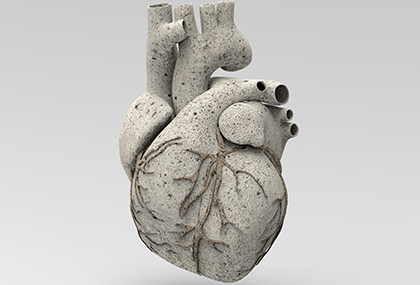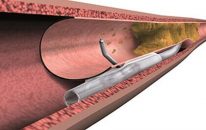The presence of a high percentage of calcium in the left main coronary artery is independently associated with a 20–30% greater risk for cardiovascular and all-cause death in asymptomatic adults. This highlights the fact that calcium location, and not only amount, is important. Calcium scoring reports from computerized tomography (CT) usually inform only that: how…
Peri-Procedural Infarction in Angioplasty vs. Surgery in the Left Main Coronary Artery
According to the EXCEL trial, peri-procedural infarction was more common after left main coronary artery surgery compared with angioplasty, and it was strongly associated with increased 3-year mortality after controlling all possible confounding variables. This increased mortality was only present in extensive infarctions with an increase in CK-MB ≥10×. The EXCEL trial seems to want…
Antianginal Medication Before and After Rechanneling
Escalation or de-escalation of antianginal medication was less common than treatment continuation without change after a chronic total occlusion rechanneling, with little variation according to the site. Further research is needed to identify patients who would benefit (or not) from these drugs and to develop strategies to adjust treatment during follow-up. This work basically tells…
The FDA Affirms Mortality Signs with Paclitaxel Based Devices
Evidently, we are still uncertain. The information goes both ways, even on our own web page, we have been coming and going just like any other publication around the world. After a 2-day debate, the Circulatory System Devices FDA panel has confirmed the tendency to higher mortality with paclitaxel-based devices and is expected to debate…
Outcomes of MAIN-COMPARE: A 10-Year Follow-Up for a Historical Rivalry
Angioplasty and myocardial revascularization surgery have competed over the left main coronary artery for a long time. There may be many points of view involved in the interpretation of trial outcomes. While surgeons consider the left main coronary artery to be suitable for surgery (except when faced with surgical contraindications), interventional cardiologists see the left…
EXCEL Outcomes: PCI vs CABG in Patients with Prior Cerebrovascular disease
Most certainly, as we read this title, we imagine the conclusion (as does the editor): patients with prior cerebrovascular disease (CEVD) benefit from a less invasive revascularization strategy, such as PCI. However, the EXCEL outcomes tell us that patients with left main coronary artery disease (LMCAD) and a history of CEVD will not benefit from…
In-Hospital Costs and Costs of Complications of Chronic Total Occlusions
Is a chronic total occlusion worth rechanneling? This question can often be found in different studies, all of them with clinical endpoints. This study (soon to be published in J Am Coll Cardiol Intv.) analyzes another aspect: costs, not only derived from materials used for a successful procedure, but also from materials and hospital stay…
CTO: in Radial Access with Similar Results to Femoral
Courtesy of Dr. Carlos Fava. One of the characteristics of chronic total occlusion (CTO) is the use of two access routes: femoral and radial. The radial approach is safer, but it has not been thoroughly analyzed in this type of PCI. The study looked at 3709 patients undergoing left main percutaneous coronary intervention (PCI) for…
Left Main PCI Technique Could Change DAPT Duration
Up to 20% of patients undergoing left main PCI require a 2-stent technique, and this number should most likely grow after the DKCRUSH-V outcomes. However, this study contradicts the DKCRUSH-V and brings us back to “the simpler the better”, since patients undergoing 1 stent left main PCI presented less revascularization and less target vessel failure…
Radial Access Is Always Preferred, Even for Treatment of the Left Main Coronary Artery
The potential need for a 7-Fr guidewire, the use of several coronary guidewires and/or a kissing balloon, and the requirement of indispensable monitoring by intravascular ultrasound (IVUS) have been used by some interventional cardiologists as excuses to resist radial access. In that sense, left main coronary artery angioplasty was the last stand of femoral access.…
Clinical Improvement Without Ventricular Function Improvement After CTO
The benefits offered to patients by attempting the rechanneling of a chronic total occlusion are still unclear. Additionally, sometimes the procedural risks are somewhat undetermined. Taking into account these controversies, this work sought to prove whether successful rechanneling of a chronic total occlusion improves ventricular function. This is not a soft endpoint; it has been…










